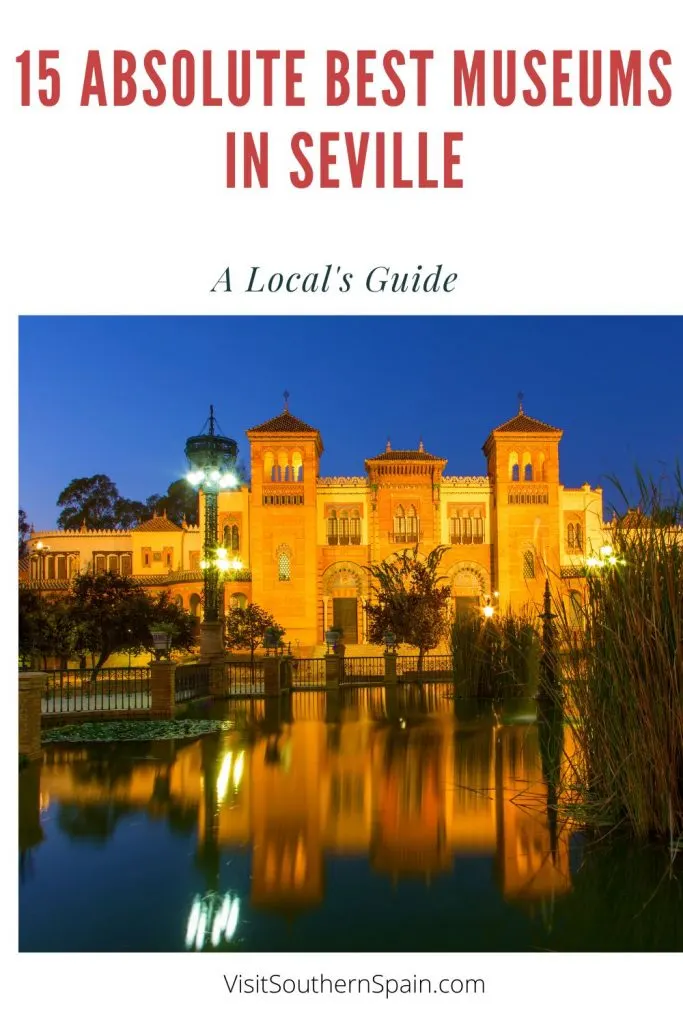A guide to the best museums in Seville that will take you down history lane
Do you love art? Culture? History? Of course, you do. That’s good because there’s a city that is perfect for you.
The city of Seville is like a Spanish museum itself. to walk through the storied streets of this ancient town is to breathe culture.
There are so many fantastic museums in Seville that you’ll never fit them all in a single trip.
There’s so much amazing art and many different types of museums that you’ll go home several IQ points up from where you started.
Beyond all the amazing museums in Seville, there are so many things to do in Seville that your stay will be action-packed. So, please look at our list!
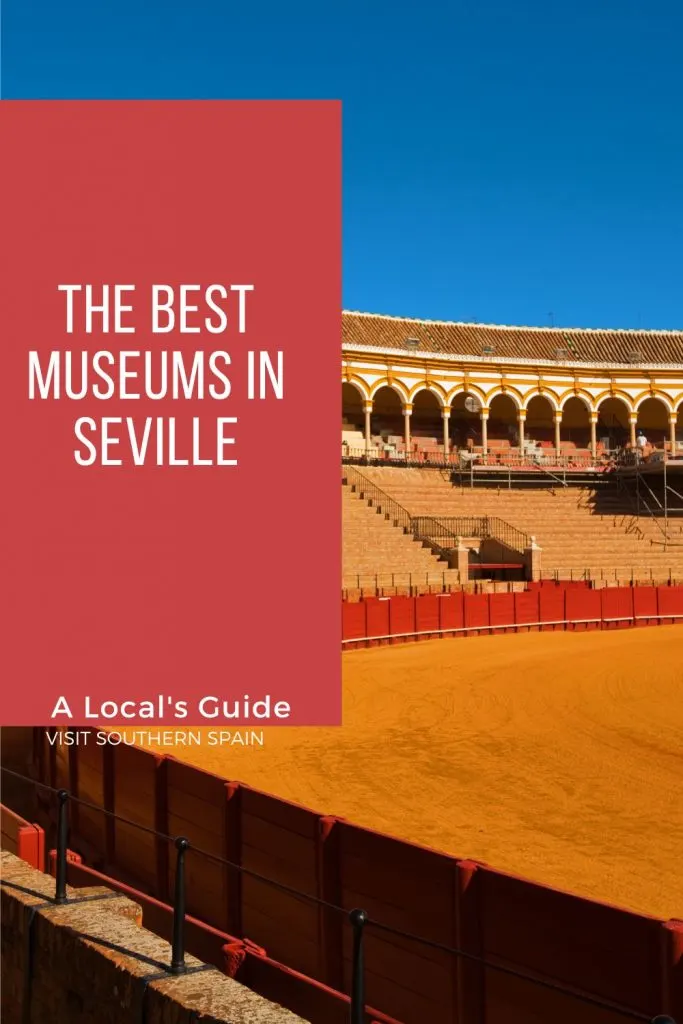
You, dear reader, support this blog. If you purchase through a link, we earn a small commission. As an Amazon Affiliate, we earn from qualifying purchases.
Pssst…??!! You can’t get enough Seville posts? Have a look at my other posts:
OVERVIEW: Best Museums in Seville
Seville is full of fascinating museums but don’t miss these ones:
1. The Flamenco Dance Museum
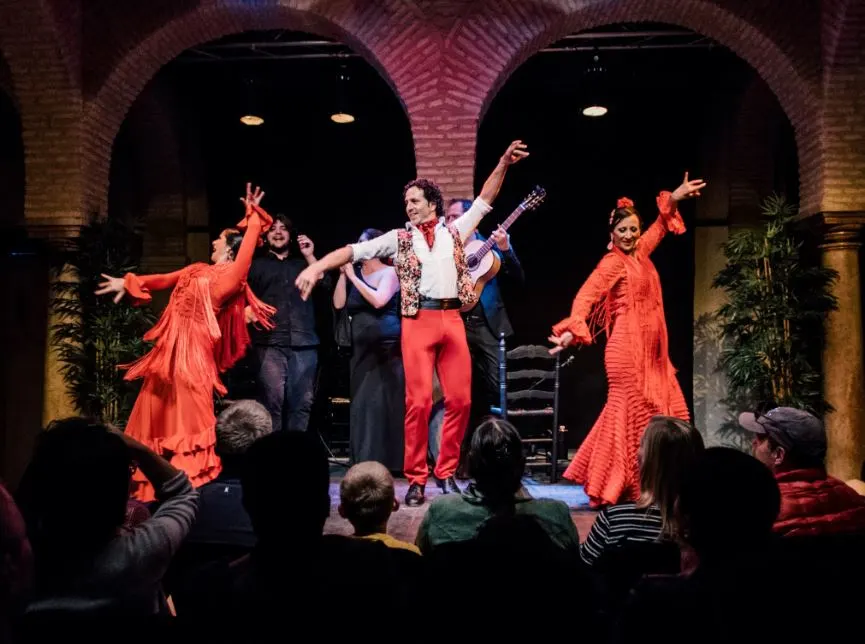
If you want to learn about flamenco dance history, then the Museo Del Baile Flamenco (Flamenco Dance Museum) is one of the most interesting museums you could possibly visit. the place to head to.
Not only is this place one of the finest museums in Seville, but the shows also staged here each night are among the best flamenco shows in Seville.
The stunning venue in the labyrinth heart of historical Santa Cruz, as one of the best buildings in Seville is worth the visit in its own right.
The museum is packed with historical artifacts that depict the history of flamenco dancing.
As Seville is the home of flamenco, there are so many fascinating articles here that even if you’re not a fan of dance, you’ll still find the museum well worth the visit.
And if you are just for one day in Seville, the flamenco dance museum is a must-see.
Opening times: Daily, 11:00 AM to 6:30 PM; Three shows nightly at 5 PM, 7 PM, and 8:45 PM
2. Museo de Bellas Artes
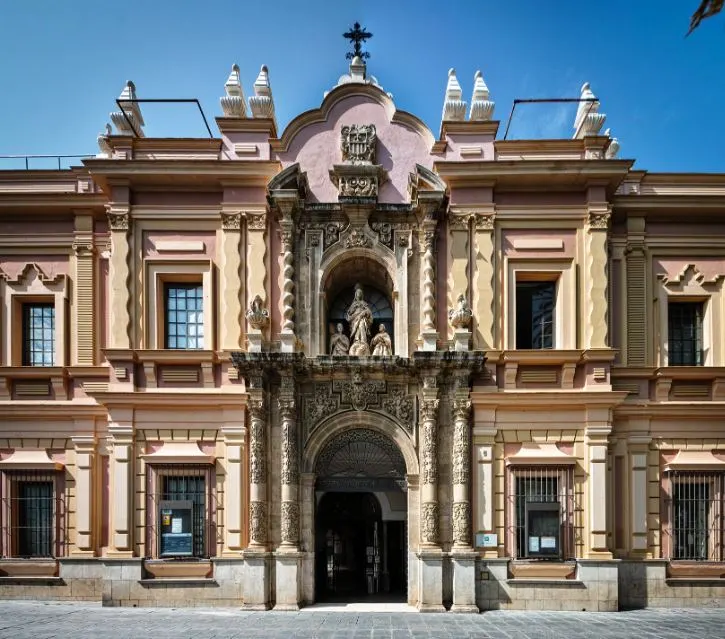
When it comes to famous art museums, they don’t hit much harder than the Museo de Bellas Artes de Sevilla (Seville Museum of Fine Arts). This is one of the most famous Seville history museum around.
After Madrid’s Prado, this is one of the most important Spanish art museums. In Spain, art museums abound.
However, with its collection from the Middle Ages, Renaissance, Baroque era, and 20th century it’s easy to see why this is one of the most historic museums around.
This famous art museums in Seville is an absolute must-see for culture vultures and is undoubtedly one of the best things to do in Spain for those who love art and history.
Opening times: Tuesday to Saturday, 9 AM to 9 PM; Sunday, 9 AM to 3 PM
3. Andalusian Museum of Contemporary Art
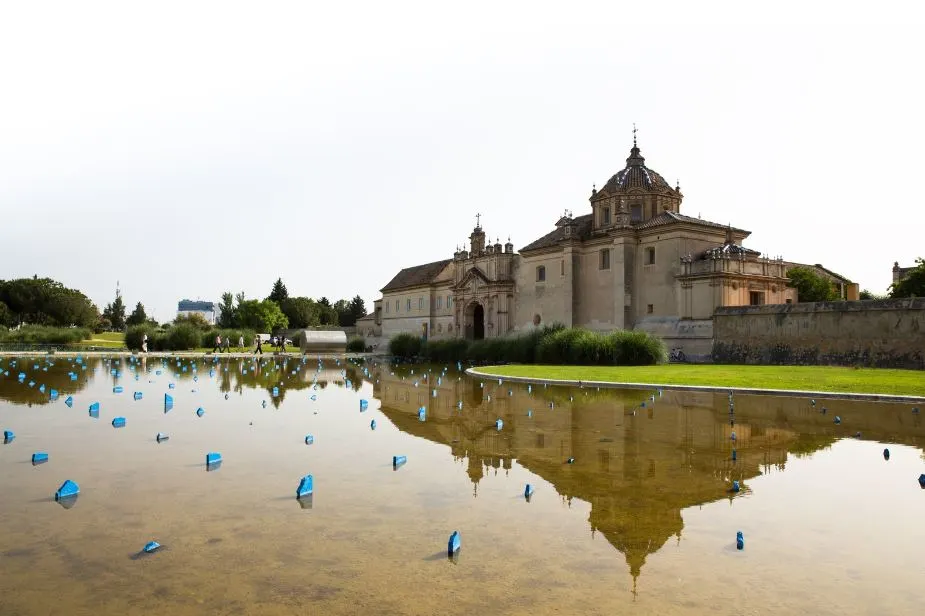
The Andalusian Museum of Contemporary Art is another of Seville’s famous art galleries that is an absolute must for those who like art from recent periods.
This is one of the most fascinating art museums in Spain.
The collection here ranges from the mid-20th century right through to the current day. It covers the artistic trends that gained prevalence throughout Spain during this period.
As an added aside, the museum is set within the old Cartuja de Santa María de las Cuevas Monastery, where Christopher Columbus’ remains were kept for a time.
So if you’re going to Spain, art museums don’t come much more wonderful than this.
Opening times: Tuesday to Saturday, 11 AM to 9 PM; Sunday, 10 AM to 3:30 PM
4. Museum of Art and Traditional Culture
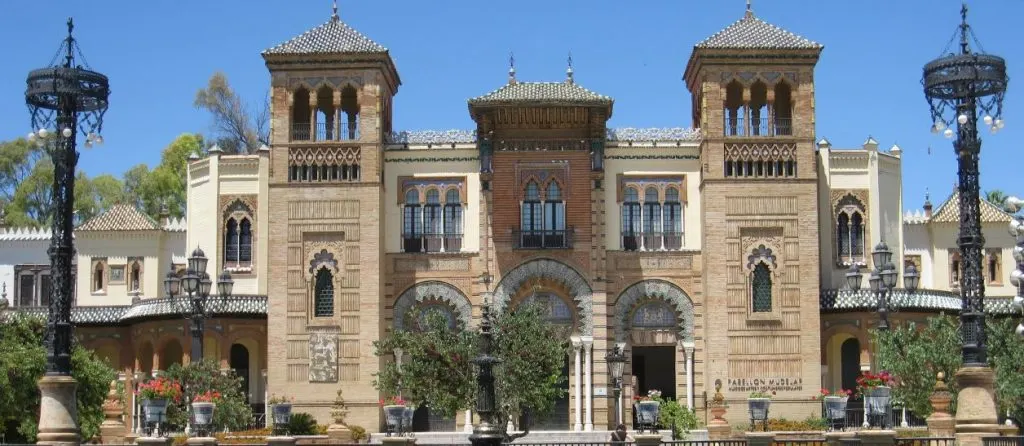
Located within the stunning María Luisa Park (which is well worth a visit in its own right), this museum will provide you with a fantastic insight into the traditional art and customs of the local area.
Inside, you’ll find a marvelous collection of art and artifacts among both the permanent and temporary exhibitions that populate the building.
There are somewhere within the region of 15,000 artifacts that compose the permanent collections!
You’ll find collections of ivory, pottery, ceramics, lace and embroidery, old posters, antique glassware, postcards, and photography alongside information about the city and the Andalucian way of life.
Opening times: Tuesday to Saturday, 9 AM to 9 PM; Sunday, 9 AM to 3 PM
5. Archaeological Museum of Seville
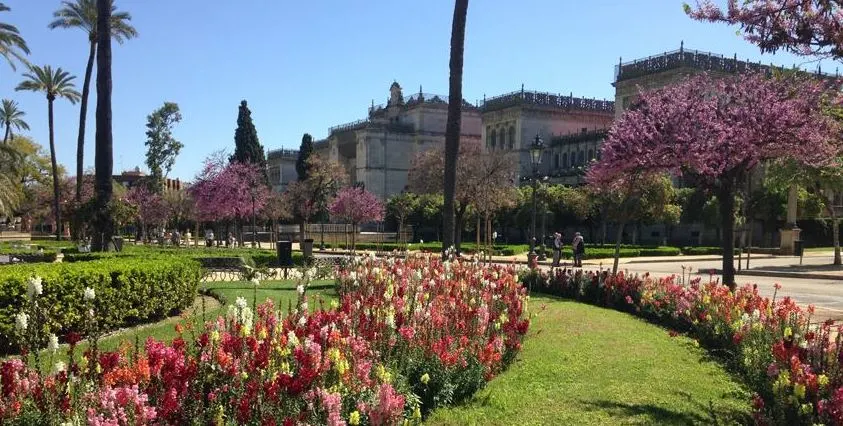
Just across the plaza from the Museum of Art and Traditional Culture, you’ll find another of the most fascinating museums in Seville.
The Archaeological Museum of Seville is a mainstay in Seville’s cultural scene and has been around since the 19th century.
The museum is set over three floors, with each floor dedicated to a different historical period.
To break these all down into their component parts would require a long list but the eras covered are from Prehistory to Early Modern.
Seville one once known as the Roman city of Italica, the remnants of which can still be seen in and around the city, so don’t miss the incredible section that covers this era.
Opening times: Closed for Renovation until 2026
6. Castillo San Jorge – Inquisition Museum
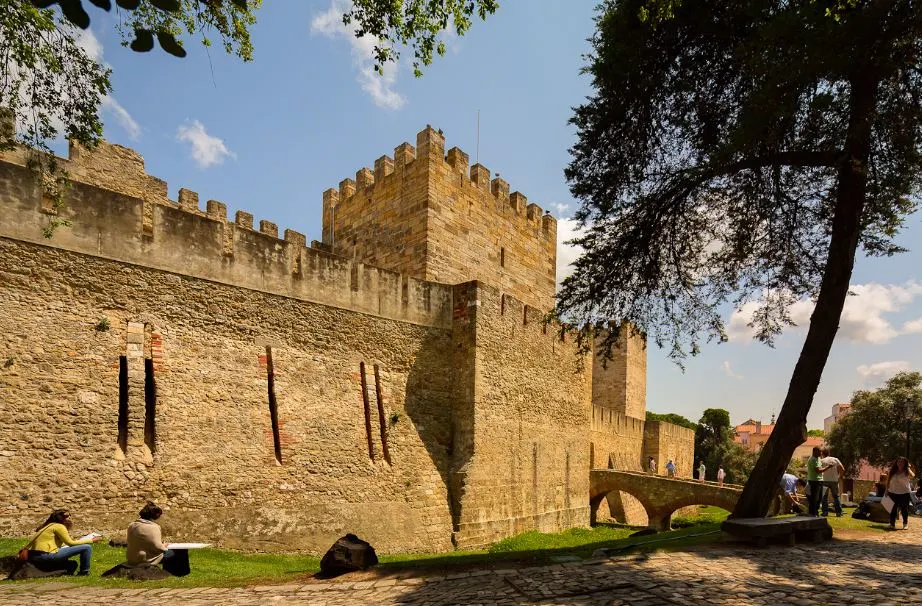
Just over the Puente de Isabel II (Isabel II Bridge) in wonderful Triana, you’ll find the Castillo de San Jorge, the remains of which contains one of the most fun museums and great things to do with kids in Seville.
The Castillo de San Jorge was a medieval castle that was also the headquarters for the Spanish Inquisition, the ruins of which lay under the Mercado de Triana (Triana Market).
The inquisition museum Seville located here is one of the most historically fascinating museums in Spain.
Beyond the goriness (it’s about the inquisition after all!), you’ll find this museum one of the most educational places you can visit, packed with intriguing information from a dark period in Spanish history.
Opening times: Monday to Friday, 11 AM to 6:30 PM; Weekend and Holidays, 10 AM to 3 PM
7. Triana Ceramics Center
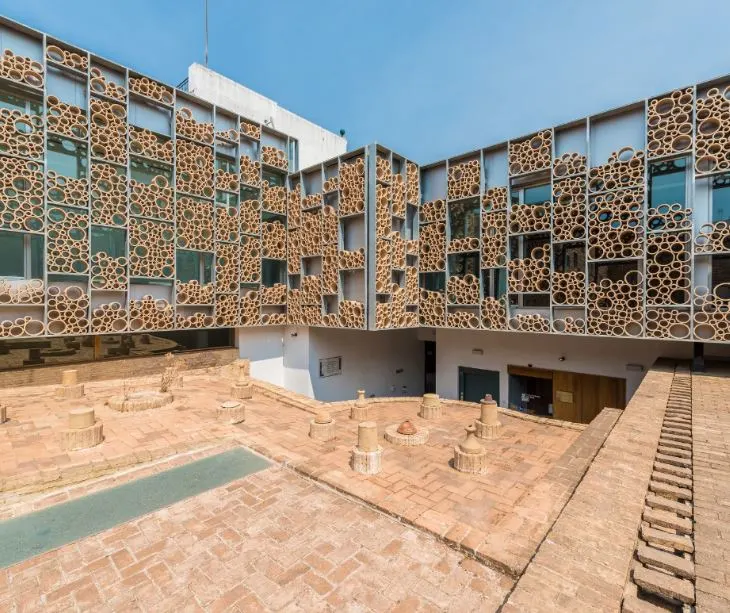
Staying in stunning Triana, the Centro Cerámica Triana (Triana Ceramics Center) magnificently exhibits the incredible ceramic work that is prevalent throughout the region.
This informative museum in Sevilla is set over two floors.
The ground floor contains a permanent collection of artifacts such as traditional kilns, with the upper floor dedicated to a documentation center that will tell you all you need to know about its history.
It’s relatively cheap to enter and gives you a great excuse to cross the bridge and spend some time in beautiful Triana! What more could you ask for?
Opening times: Tuesday to Sunday, 10 AM to 6 PM
8. Museo Casa de la Ciencia
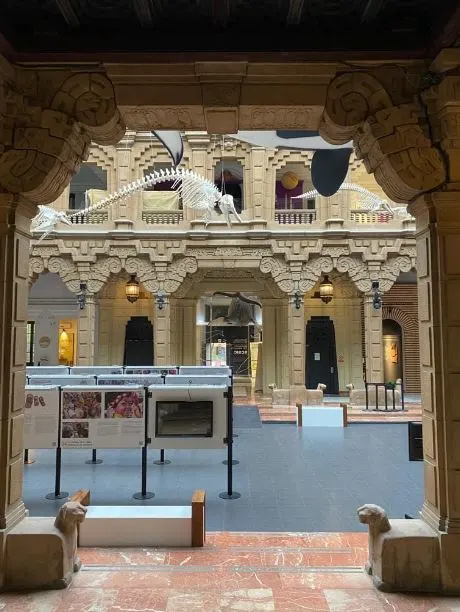
La Casa de la Ciencia (The House of Science) is an incredibly educationally focused museum with the aim of providing a link between the scientific community and the public.
They attempt to make the most complex of scientific findings accessible to all.
The building is home to the Andalucian branch of the Spanish National Research Council, which is the third-largest scientific research institution in Europe.
The aim is to demystify science to attract more people towards the sometimes perplexing subject.
This is one of the more fascinating and unusual museums in Seville and hosts a multitude of events including exhibitions, conferences, seminars, and workshops.
Opening times: Tuesday to Sunday, 10 AM to 8 PM
AIRE DE SEVILLA PerfumeVintage Sevilla T-ShirtRick Steves Sevilla, Granada & AndaluciaAndalusia: Recipes from Seville and BeyondTop 10 Andalucía and the Costa del Sol (Pocket Travel Guide)Spanish Flag T-Shirt
9. The Torre del Oro Seafaring Museum
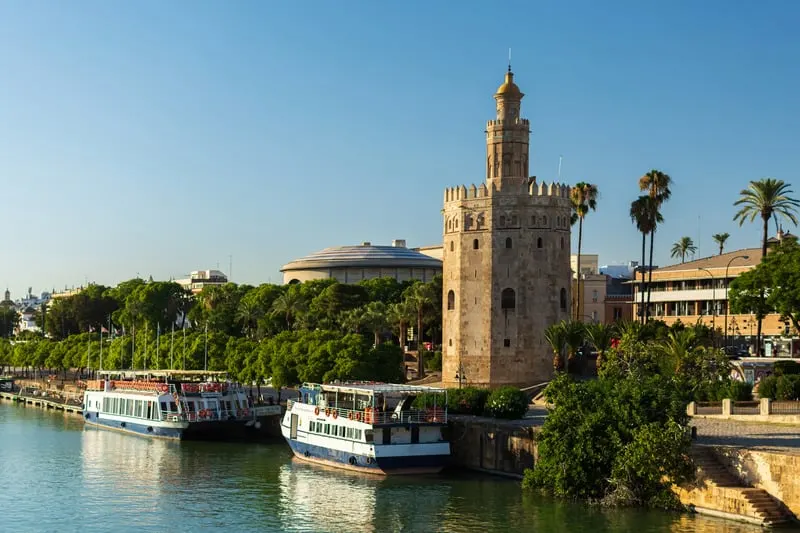
If you’re looking for a historical museum with a magnificent setting then the Torre del Oro Seafaring Museum is difficult to beat.
The Torre del Oro is one of Seville’s most famous and iconic landmarks.
The Torre del Oro was built in the 12th century and you’ll find the Seafaring Museum on the top floor of the building. However, there are other fascinating historical artifacts located throughout the building.
Among the items, you’ll discover are compasses, ancient marine charts, engravings, fossilized marine debris, maps, cannons, nautical flags, bow masks, shipping instruments, scale models, and photographs.
Opening times: Monday to Friday, 9:30 AM to 6:45 PM; Weekend, 10:30 AM to 6:45 PM
10. Maestranza Bullring
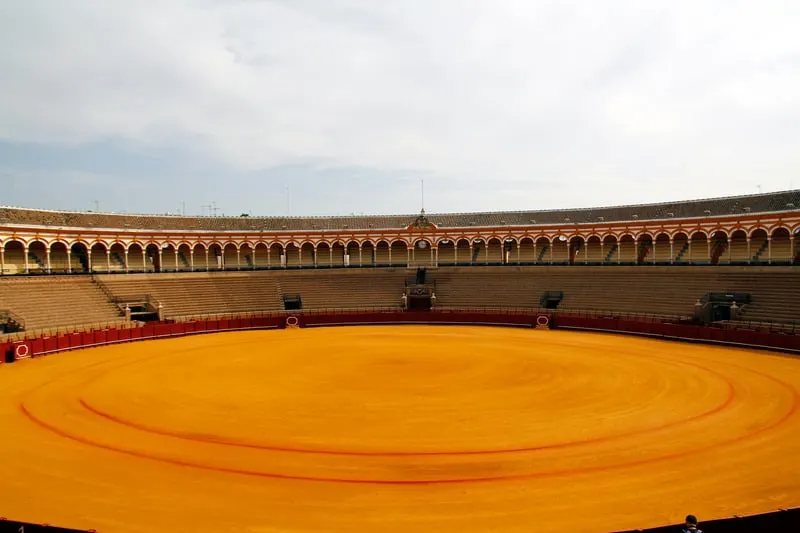
La Plaza de Toros de la Real Maestranza de Caballería de Sevilla, to give it its full title, is more commonly known as La Maestranza.
Built in 1761, it is certainly one of the most famous (if not the most famous) centers of bullfighting in the whole of Spain.
The Museo Taurino (Museum of bullfighting) is set within this iconic location in the center of Seville.
The museum is packed with artifacts that depict the history of bullfighting in Spain.
Seville is famed for its bullfighters (with many hailing from the Triana neighborhood) and around the bullring, you’ll find several statues dedicated to local legends of the sport.
Opening times: Daily, 9:30 AM to 7:30 PM
11. Real Alcazar
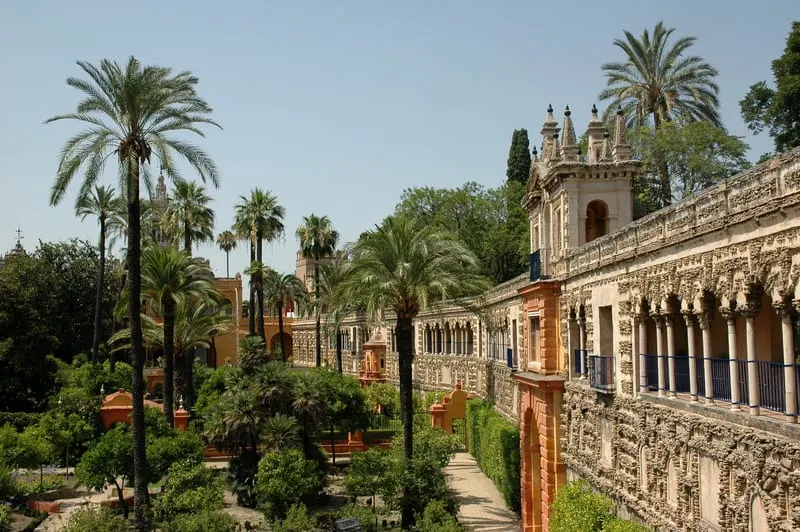
For fans of architecture, the Real Alcazar is an absolute must. This UNESCO-listed palace is living, breathing history in itself.
The intricate detailing of the ceilings and walls is worth a visit in its own right.
Don’t miss the spectacular Courtyard of the Maidens. The sensational architecture of the buildings that flank the courtyard is so intricate and ornate that it will leave you dumbfounded.
It’s worth noting that no more than 750 visitors can enter the site at the same time.
Therefore, to avoid missing out on tickets, make sure to book in advance, particularly in the peak months.
Opening times: Daily, 9:30 AM to 5 PM
12. Palacio de las Dueñas
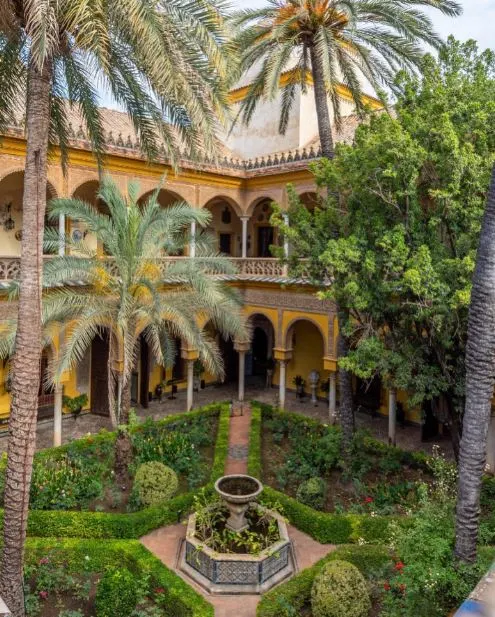
Palacio de las Dueñas is a stunning 15th-century palace that was once home to the Duchess de Alba (Duchess of Alba), at the time one of Spain’s most famous aristocrats.
Antonio Machado, the storied Spanish poet, was also born in this historical building in 1875.
Inside you’ll find magnificent tapestries, pottery, and paintings among some quirkier objects from the Duchess’s collection.
These include bullfighting artifacts and an extensive collection of football memorabilia as the Duchess was a huge Real Betis fan.
In addition to the extensive artworks and artifacts on display, the sensational building also hosts amazing gardens and a stunning arcaded courtyard.
Opening times: Daily, 10 AM to 5:15 PM
13. General Archive of the Indies
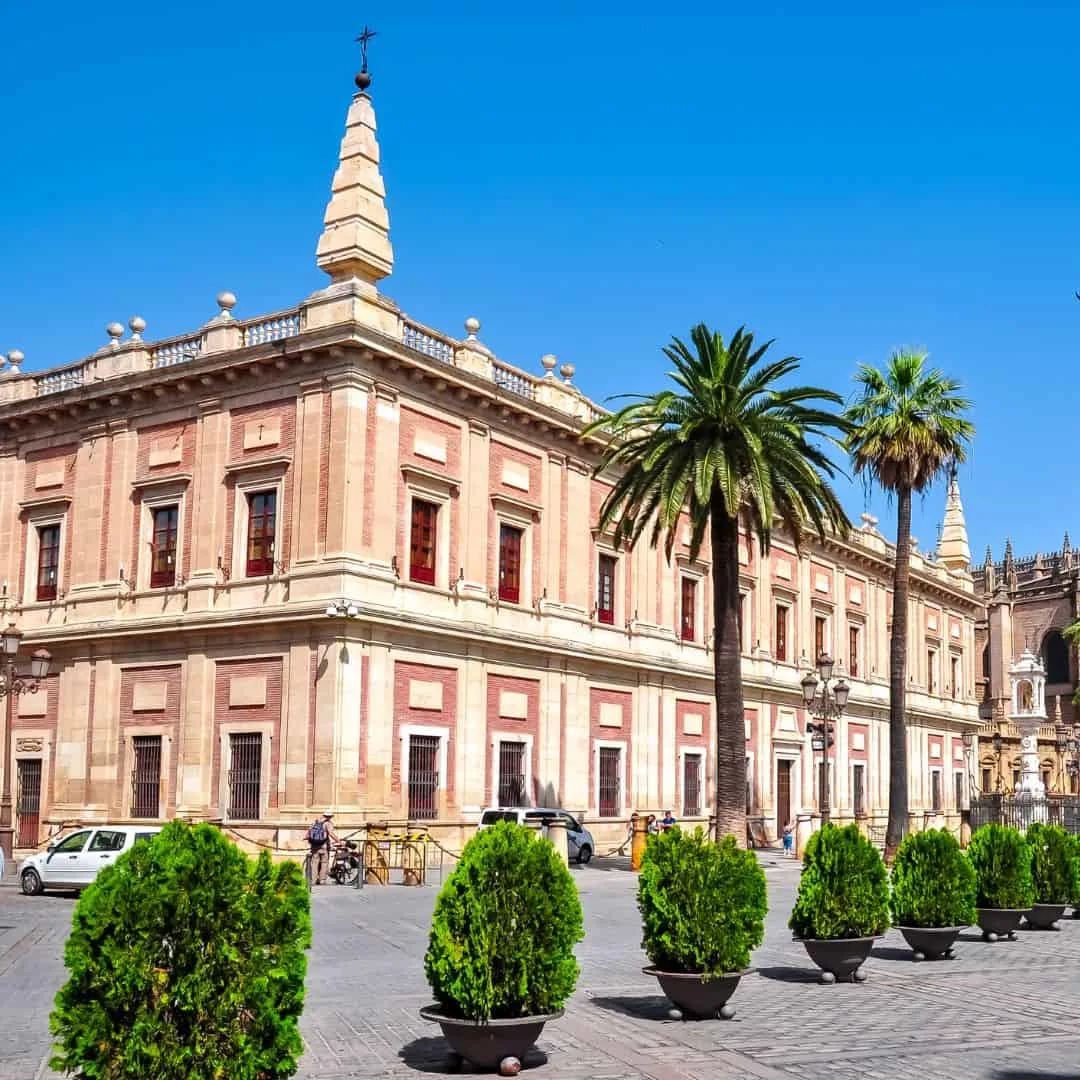
The Archivo General de Indias (General Archive of the Indies) is home not only to some magnificent examples of art from around the world.
But it also houses an important collection of artifacts documenting the colonial history of the ‘New World’ and Spain’s role in this.
As expected, there is a heavy focus on Hispanic art and artifacts, with items ranging from the 16th to the 19th centuries.
The museum opened in 1785 and contains a mind-boggling 80 million pages of documents from renowned figures including Columbus, Pizarro, and Cortés.
To give you an example of the scale of this important archive, there are over 6 miles of historical books that form part of it! This place is one of the top free things to do in Seville.
Opening times: Tuesday to Saturday, 9:30 AM to 5 PM; Sunday, 10 AM to 2 PM
14. Museo Palacio de la Condesa de Lebrija
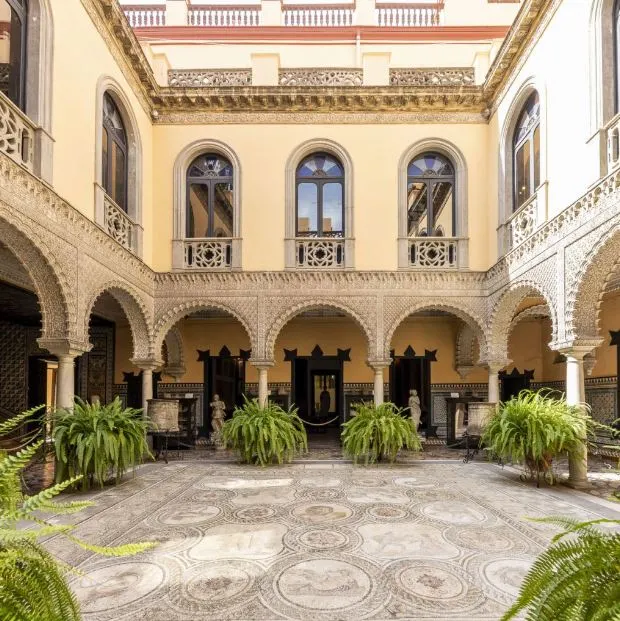
The Museo Palacio de la Condesa de Lebrija (Museum Palace of the Countess of Lebrija) is a magnificent 16th-century mansion that is set around a sensational Renaissance-Mudéjar courtyard.
The former owner of the palace was the Countess of Lebrija who also happened to be an exhaustive archaeologist.
The countess renovated the building in 1914 in order to properly display the fascinating items she collected on her travels.
You’ll find a wildly eclectic collection that covers just about any historical period and major culture you could possibly think of!
Of great note are the building’s Roman mosaics, said to be the most important private collection of such in the world.
Opening times: Daily, 10 AM to 2:15 PM and 3:15 PM to 6 PM
15. Carriage Museum of Seville
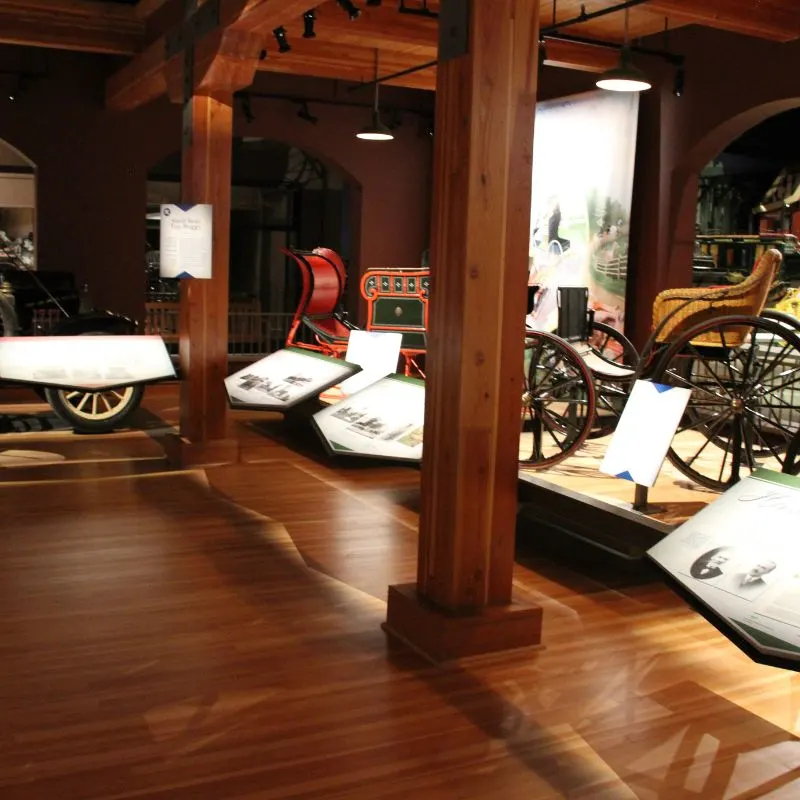
If you’d like to visit a truly unique museum in Spain, then check out the Carriage Museum of Seville.
The museum consists of four rooms, each with a different theme based on the different types of carriages.
There are many different types of carriage on display here including wagons, buggies, team vehicles, fancy carriages, irrigation carriages, galleys, sports carriages, and the first taxis.
The history of the building itself is notable. From the 16th century, it housed a convent.
However, prior to that, built in 1526 upon this site was the Virgen de Los Remedios, from which Magellan and Elcano were blessed before embarking on the first round-the-world voyage.
Opening times: Monday to Friday, 9 AM to 2 PM
16. Museum of the Macarena Brotherhood
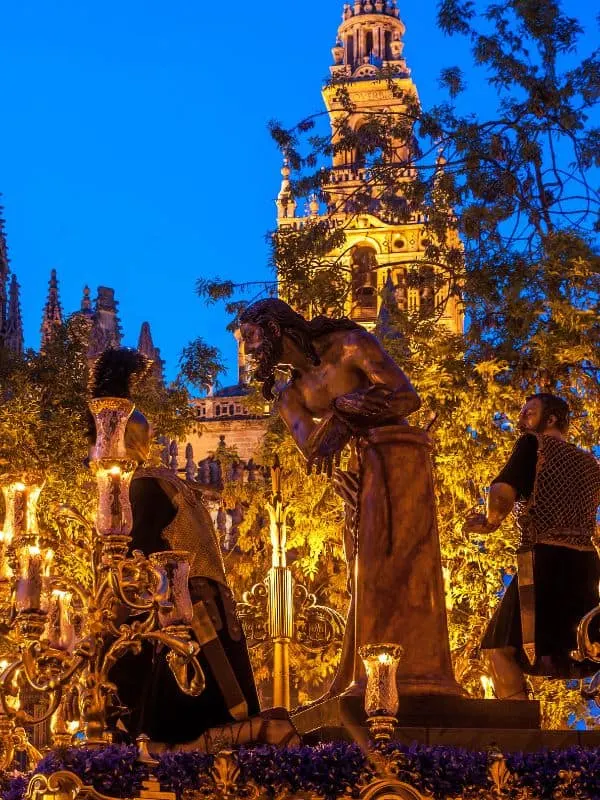
The Museo de la Hermandad de la Macarena, dedicated to the renowned Brotherhood of Macarena, offers visitors an intimate look into one of Seville’s most storied religious confraternities.
Situated near the Basilica de la Macarena, this museum houses an impressive collection of religious artifacts, intricately embroidered robes, and various items used in during the Holy Week processions.
Highlights include the richly adorned mantles of the Virgin of Hope Macarena and silverwork used in the processional floats.
This is one of the best museums in Seville Spain making you learn more about Easter week In Seville and learning how semana santa is celebrated in Spain.
Opening times: Monday to Saturday, 9 AM to 2:30 PM & 5 PM to 9:30 PM; Sunday and Holidays, 9 AM to 2 PM & 5 PM to 9 PM
17. Casa de Pilatos
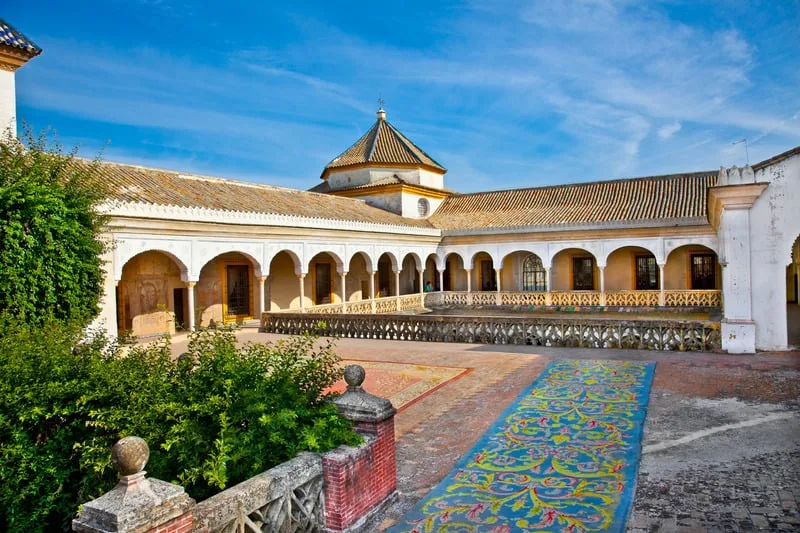
Another one of Sevilla Museums you should not miss is the Casa de Pilatos, a magnificent 16th-century palace.
It is a stunning testament to Andalusian architecture, seamlessly blending Renaissance and Mudejar styles that is why it’s one of the best buildings with Seville architecture.
Renowned for its exquisite design, the palace features intricately decorated courtyards, lush gardens, and ornate interiors adorned with vibrant azulejos (ceramic tiles).
You can marvel at an impressive collection of sculptures, paintings, and decorative arts that span centuries, reflecting rich cultural tapestry of Seville, making this a must-visit museum in Seville Spain.
Opening times: November to March, Daily, 9 AM to 6 PM; April to October, Daily, 9 AM to 7 PM
18. Galería Rafael Ortiz
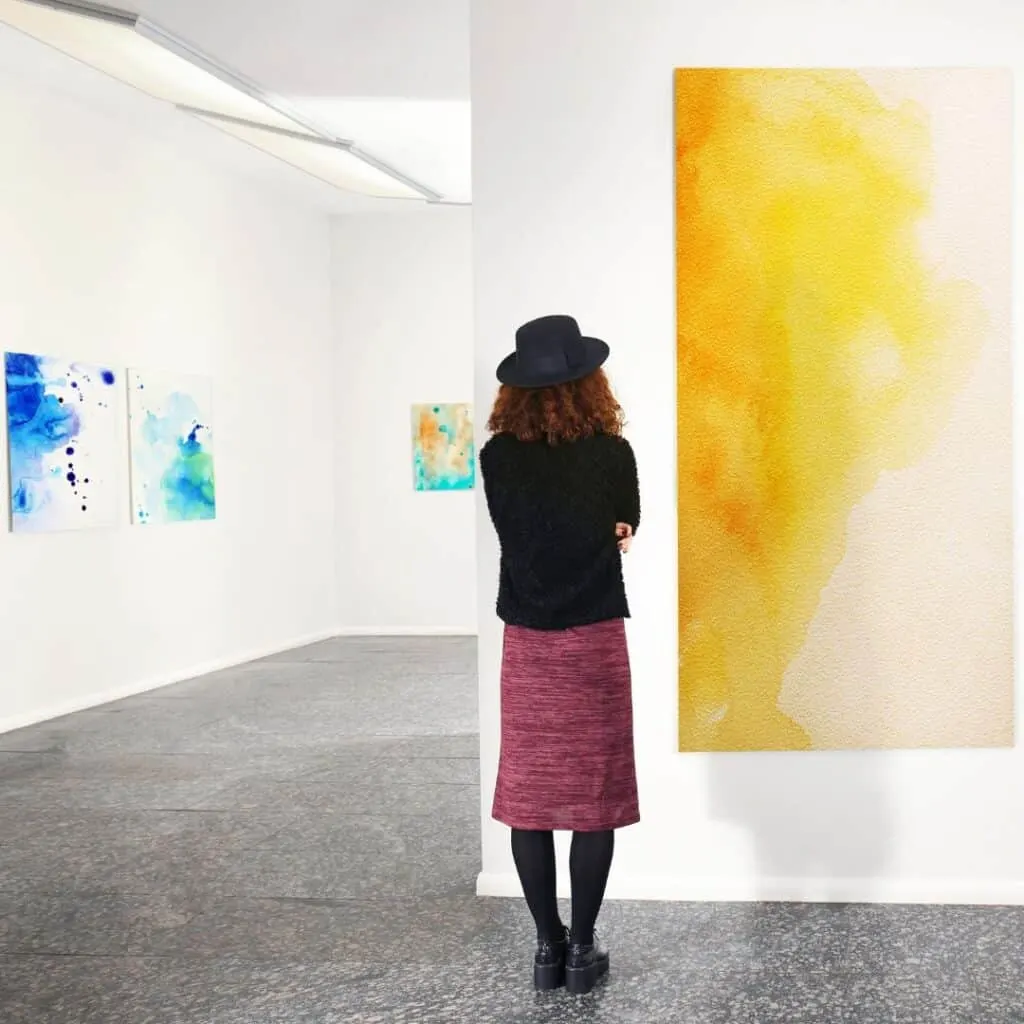
Galería Rafael Ortiz, one of the most prestigious art galleries in Seville, is renowned for its exceptional showcase of contemporary art.
The gallery features an impressive array of works from both established and emerging artists, offering a dynamic and diverse selection that highlights the latest trends and innovations in the art world.
We loved the variety of art the show here in contrast to the usual Seville museums and galleries, one should not miss during their visit to Spain.
Opening times: Monday to Friday, 10 AM to 1:30 PM & 6 PM to 9 PM; Saturday, 10 AM to 1:30 PM
19. Monasterio de Santa Paula
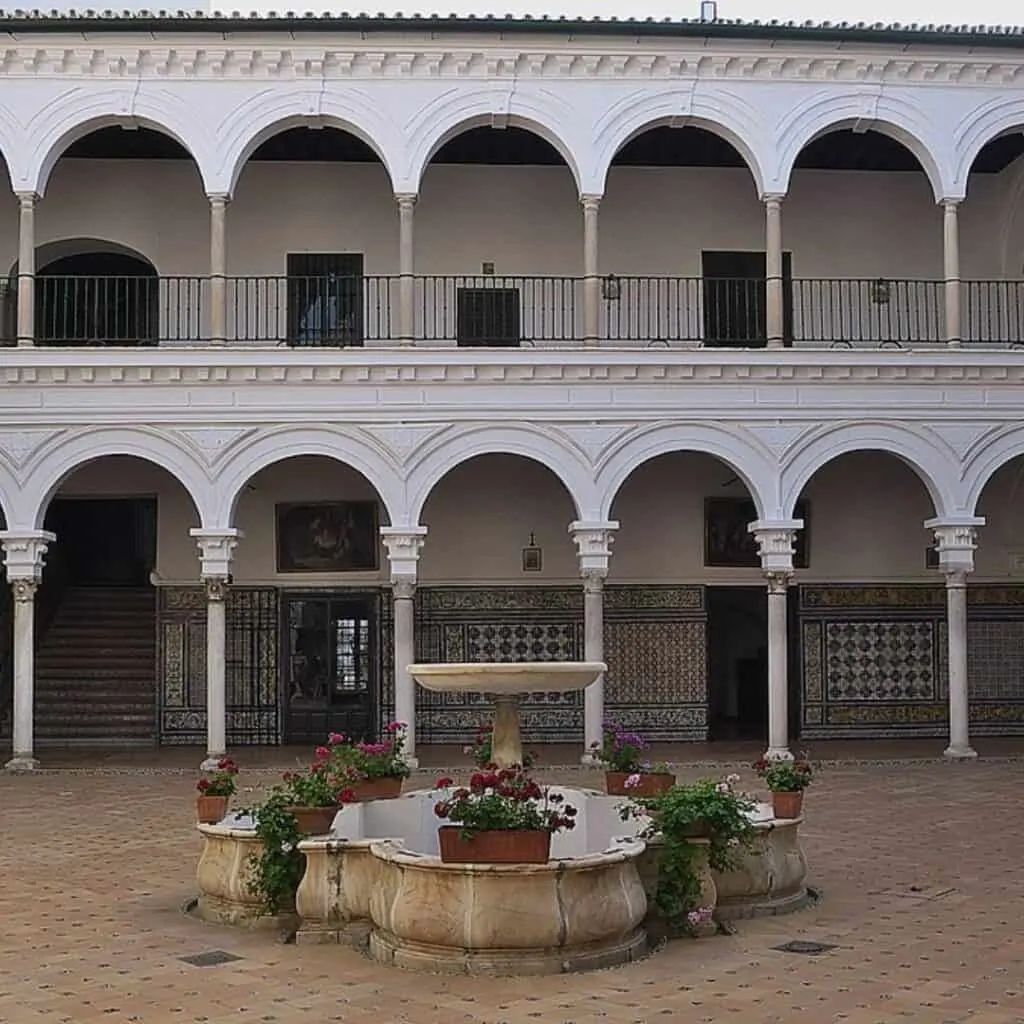
Monasterio de Santa Paula, a serene and historic monastery in Seville, offers visitors a unique glimpse into the city’s religious and artistic heritage in this Sevilla museum.
Founded in the 15th century, the monastery is home to a community of nuns and boasts an impressive collection of religious art, including paintings, sculptures, and intricate manuscripts.
The serene cloisters and tranquil gardens provide a peaceful retreat, while the monastery’s small museum in Seville showcases valuable artifacts and works of art accumulated over centuries.
With its rich history and cultural significance, Monasterio de Santa Paula is a hidden gem that invites visitors to explore the spiritual and artistic traditions of Seville.
Opening times: Tuesday to Sunday, 10 AM to 1 PM
20. La Fábrica, Museo de la Universidad de Sevilla
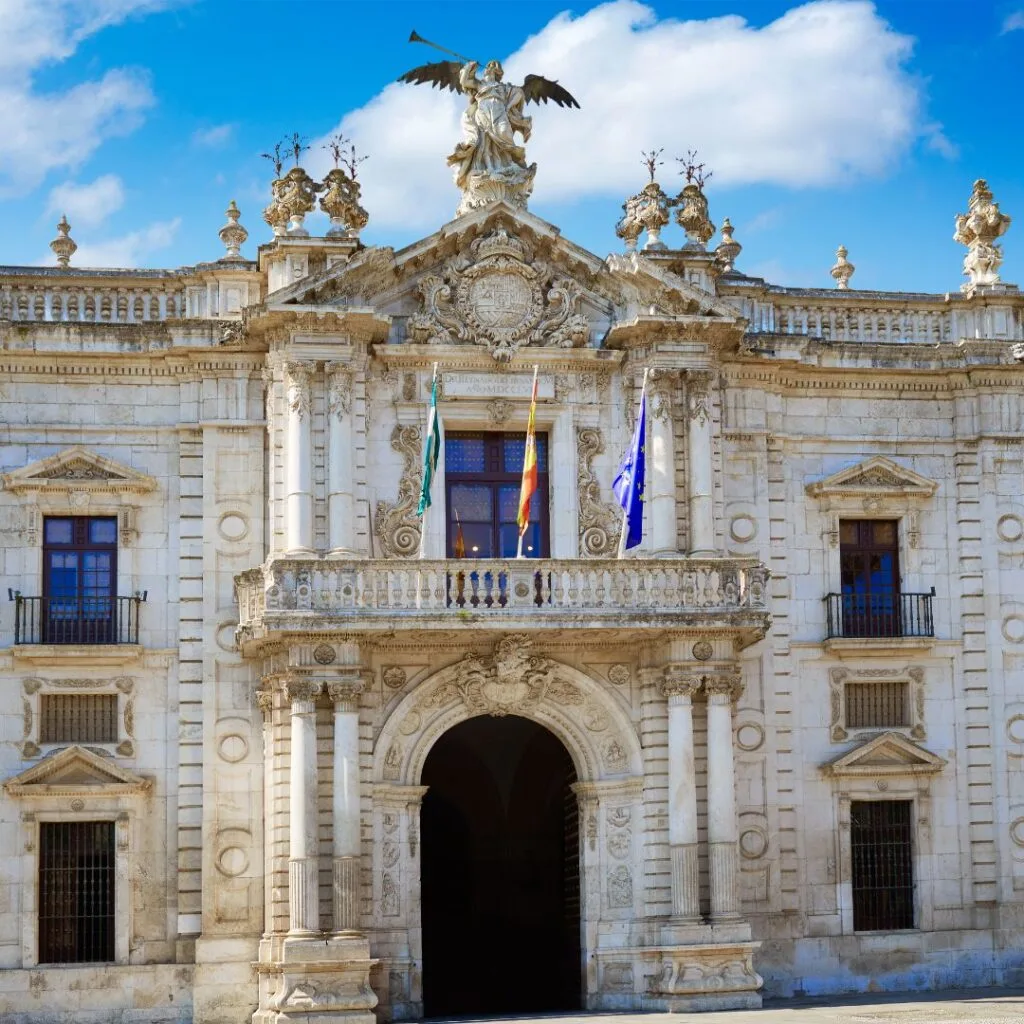
La Fábrica, Museo de la Universidad de Sevilla, is a dynamic cultural institution located in the heart of Seville. It is dedicated to the promotion and preservation of contemporary art and university heritage.
Housed in a beautifully restored industrial building, this museum in Sevilla offers a unique blend of historic charm and modern design.
Its diverse exhibitions feature works by both local and international artists, fostering a vibrant dialogue between tradition and innovation, making this one of the best museum in Seville.
Opening times: Please check website as it varies per collection.
Seville City MapVintage Spanish FanSpanish Flamenco CastanetsAire de Sevilla Cologne 150 mlSevilla T-shirtSeville and Andalucia Travel Guide
Best Hotels in Seville, Southern Spain
To help you find somewhere to stay, we’ve included three options to cover all budgets.
Hotel Alfonso XIII ***** – Luxury
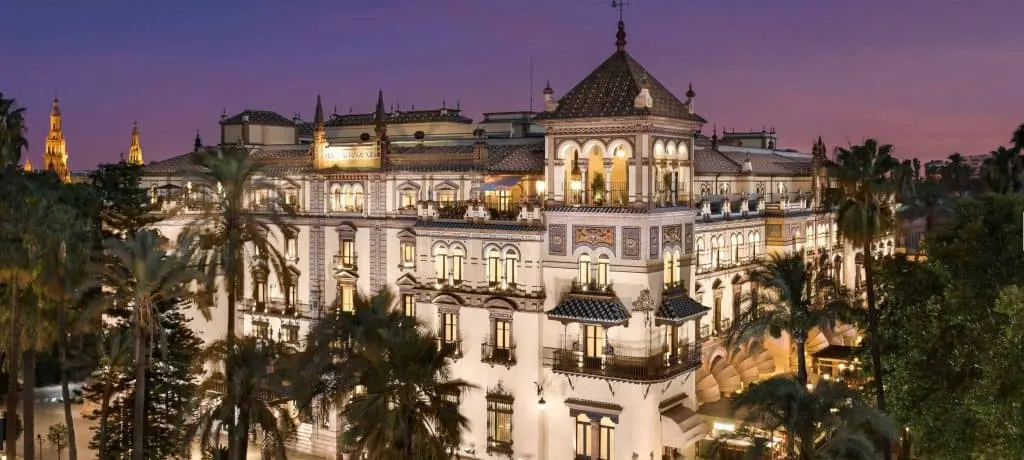
The sensational Hotel Alfonso XIII is one of Spain’s most prestigious hotels. This hotel simply oozes class.
With classically designed rooms that feature all modern amenities, it’s difficult to think of a more opulent place to stay.
It’s located a stone’s throw from the stunning Plaza de España, which is always a plus point!
Check out photos and prices here.
Hotel Casa 1800 Sevilla **** – Mid-Range
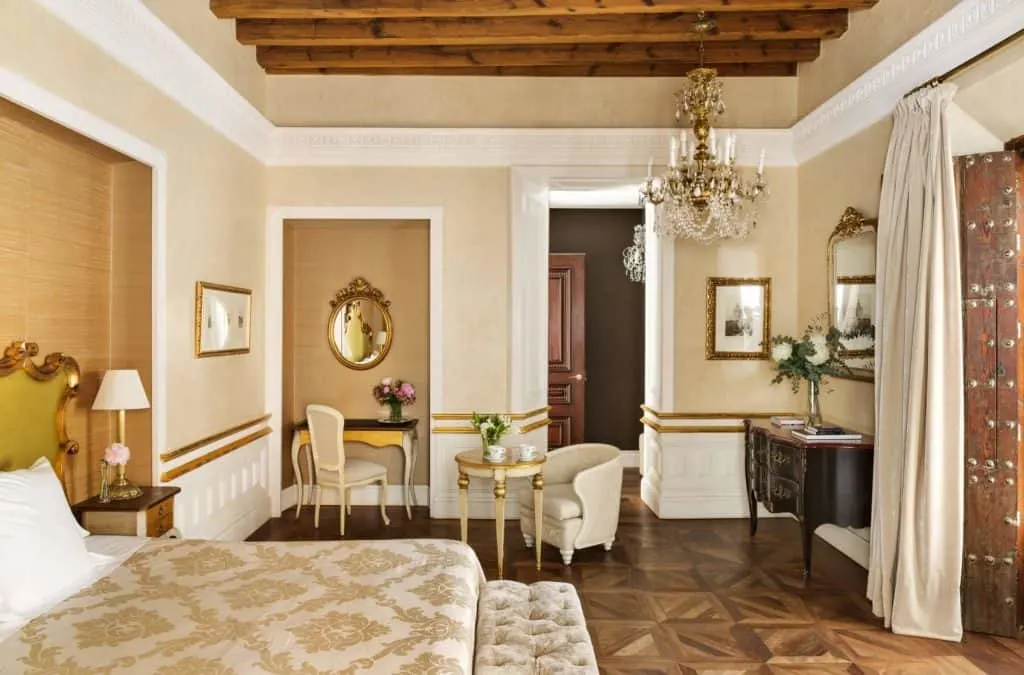
Located in the historical Santa Cruz area and a short walk from many of the city’s major monuments, this beautiful hotel is a great place from which to explore all Seville has to offer.
The rooms contain everything you could possibly need for your stay. There’s also a magnificent rooftop pool to cool off from Seville’s summer heat.
Check out reviews and prices here.
Hotel Boutique Corral del Rey *** – Budget
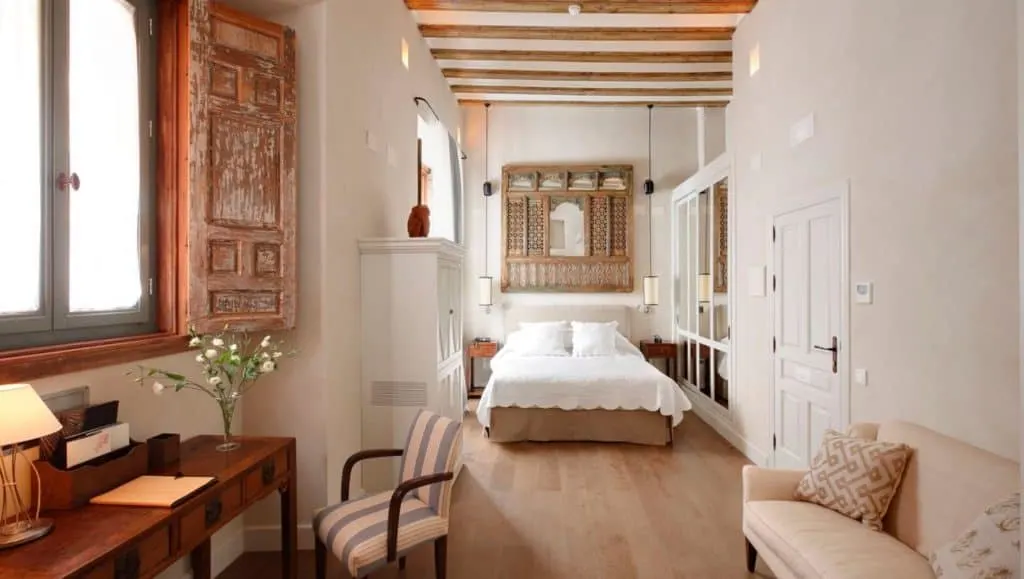
The Hotel Boutique Corral del Rey is one of the most amazing boutique hotels in Seville. It won’t break the bank either, making it a fantastic option for those on a budget.
You definitely get bang for your buck at this absolute gem of a place.
If you’d like your own terrace, the more expensive rooms come complete with one.
Getting Around Seville
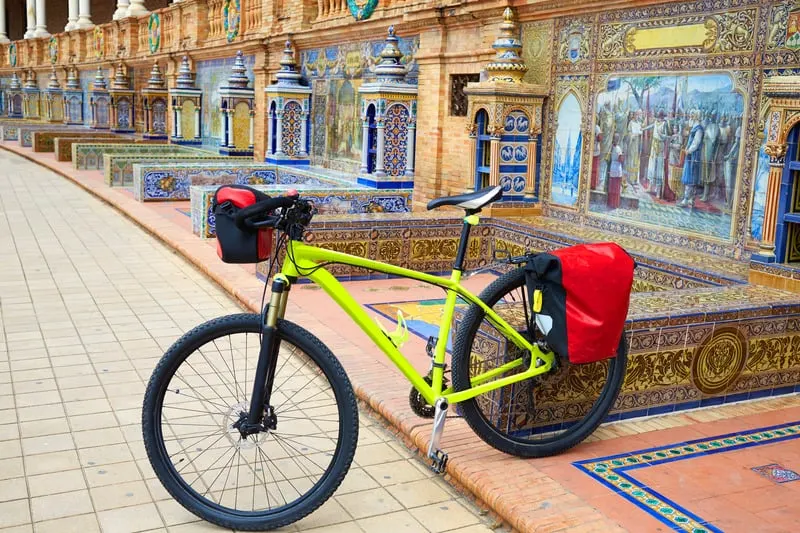
Seville is a great city to walk around, as the center is relatively compact.
Hiring a bike is another good option for getting around for the more energetic among you as the city is quite flat. Get a bike tour here.
You’ll find an extensive bus network here, run by TUSSAM. The circular C3 and C4 routes (look for the red buses) are the ones you’ll find of most use for sightseeing.
Tickets are cheap and can be bought on board; passes can be bought at any of the city’s many kiosks/tobacco shops.
If you’re here for a while, consider buying a travelcard. The options include a pay-as-you-go rechargeable card, plus one-day and three-day cards offering unlimited travel.
These can also be used on the tram. Check out the TUSSAM website for full details.
There are numerous open-top buses offering hop-on/hop-off services. These are aimed at tourists so you’ll find them excellent for traveling between the major sights. Get your tickets in advance here.
Short FAQ about the Best Museums in Seville
Which places provide the best museums in Seville for couples?
If you’re traveling as a couple, the main museums in Seville to gravitate towards include the big hitters such as the Museo de Bellas Artes, the Andalusian Museum of Contemporary Art, and the Real Alcazar.
What is Seville Spain best known for?
Among Seville’s many claims to fame are that it’s home to several storied bullfighters and flamenco dancers.
Therefore, be sure to check out The Flamenco Dance Museum and the Maestranza Bullring to delve into this rich history.
What is Seville known for?
Seville is renowned for its rich cultural heritage, vibrant flamenco scene, and stunning architecture, including its historic and contemporary Seville museums.
What is Seville famous for?
Seville is famous for its vibrant cultural heritage, including its flamenco tradition, stunning architecture, and notable museums in Sevilla such as the Museo de Bellas Artes and Centro Andaluz de Arte Contemporáneo.
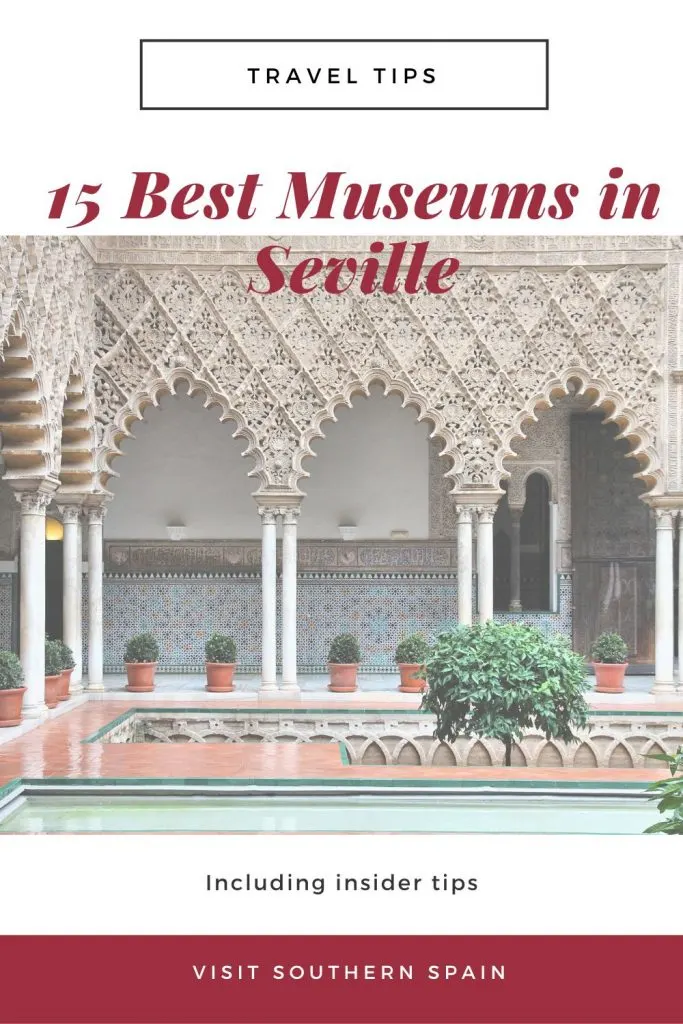
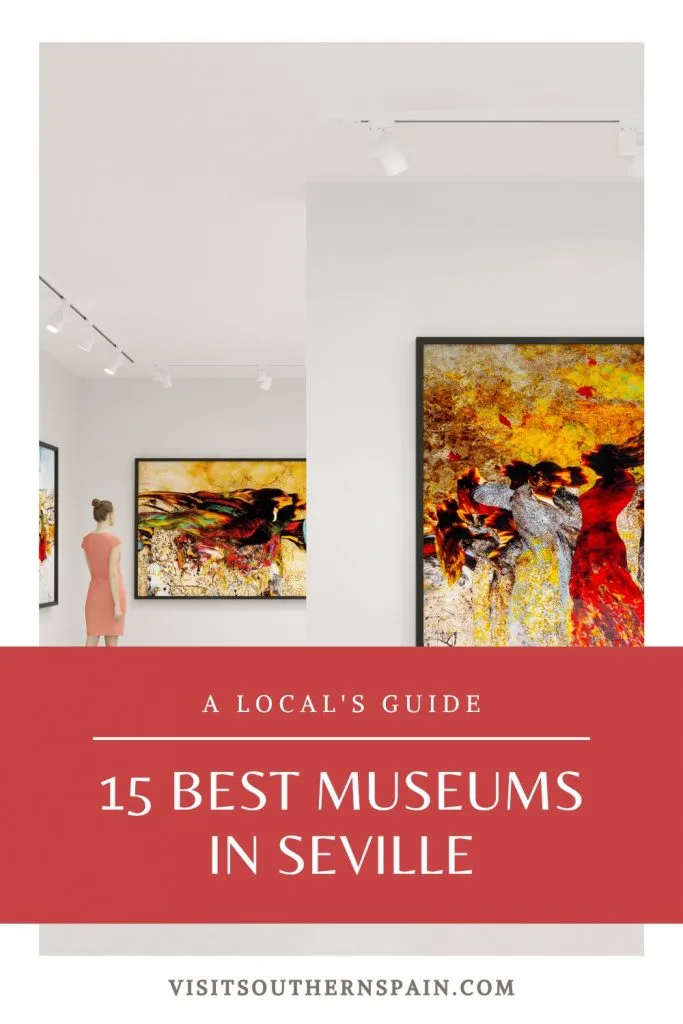
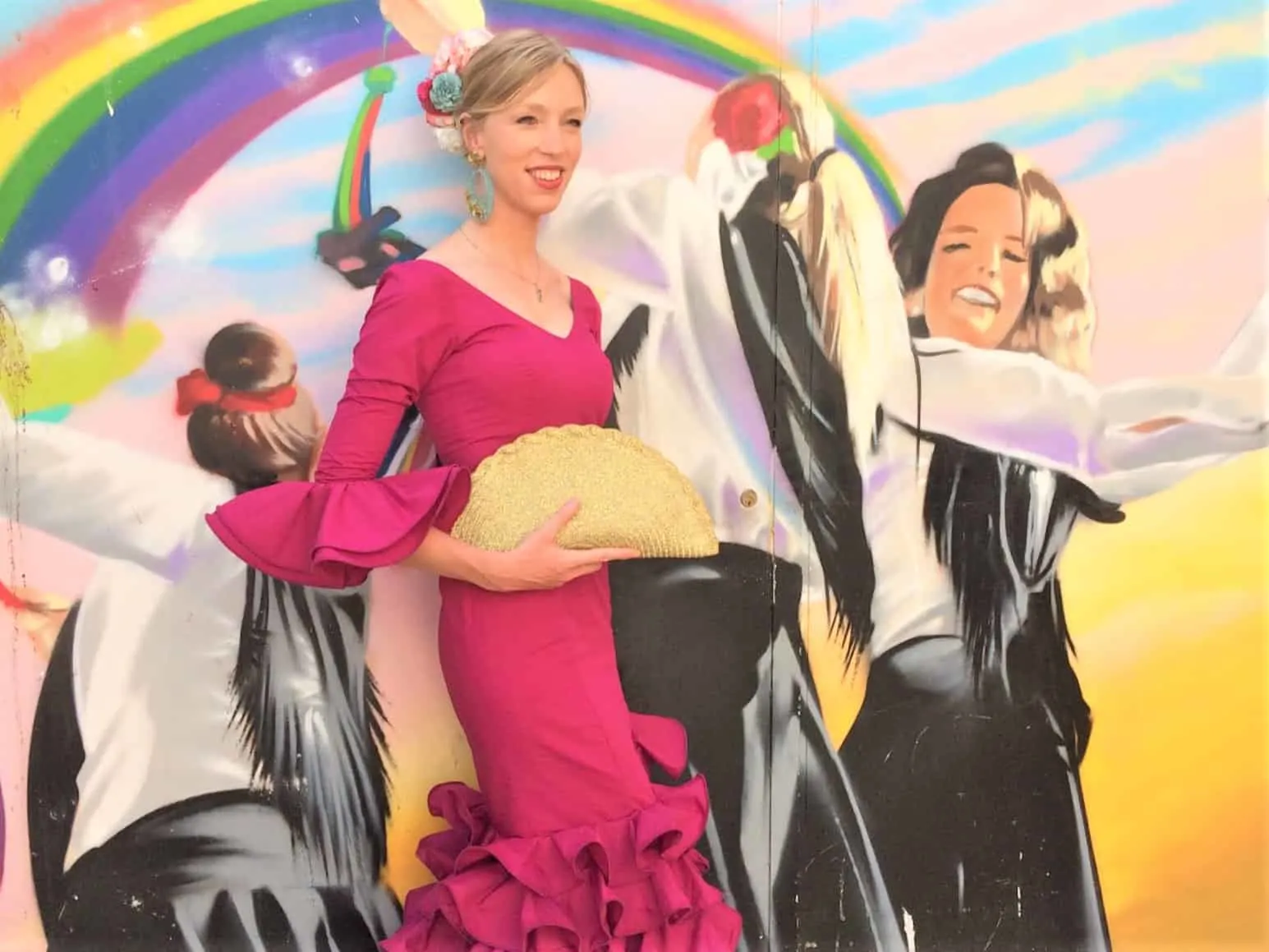
Hola, I’m Paulina! Together with my team, we are passionate about Southern Spain. Here we share all you need to know for great times in Southern Spain with the best places to visit, stay and, of course, the best food to eat.
Let’s dive in and explore Southern Spain’s outdoors, food and culture con pasión!

